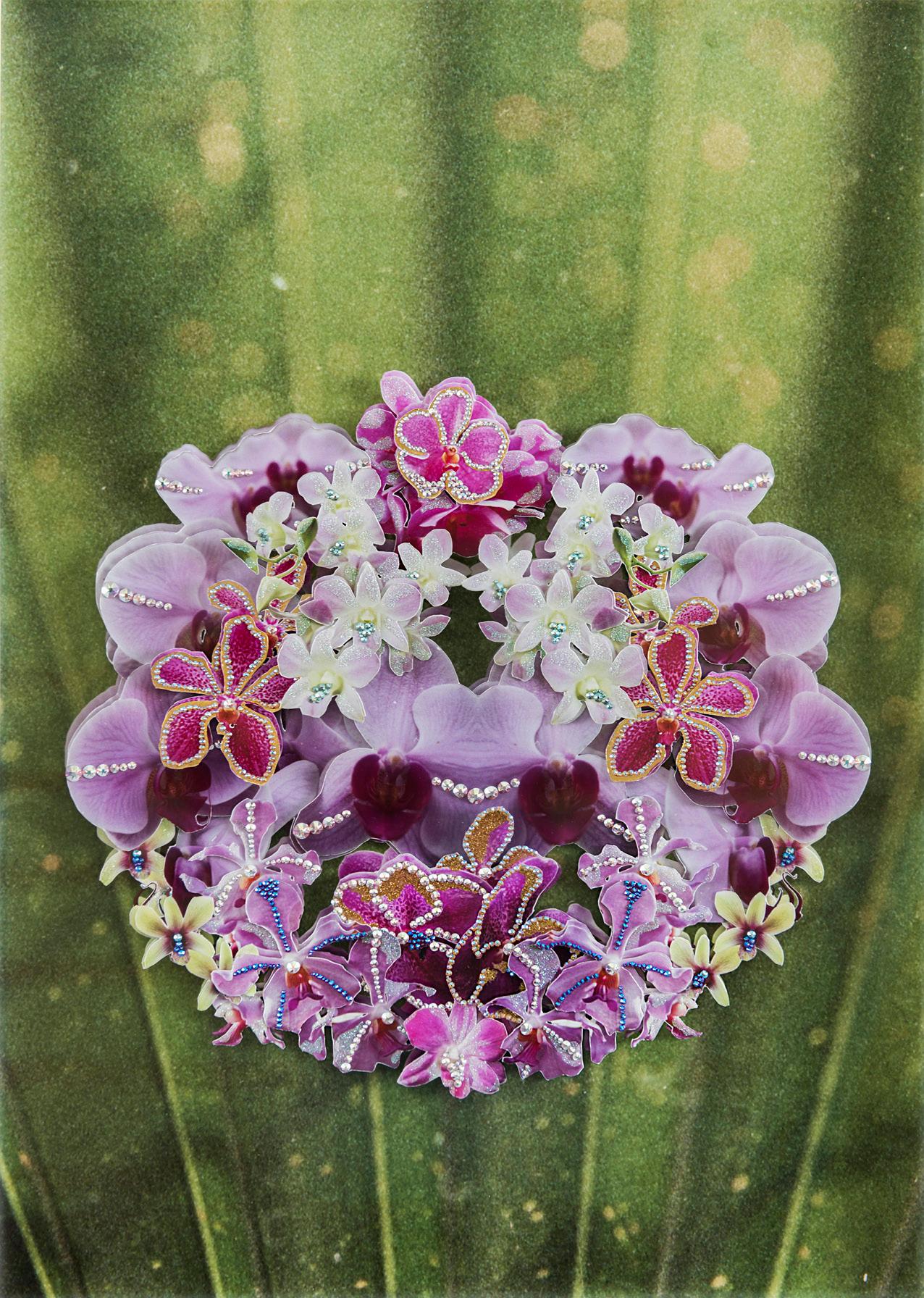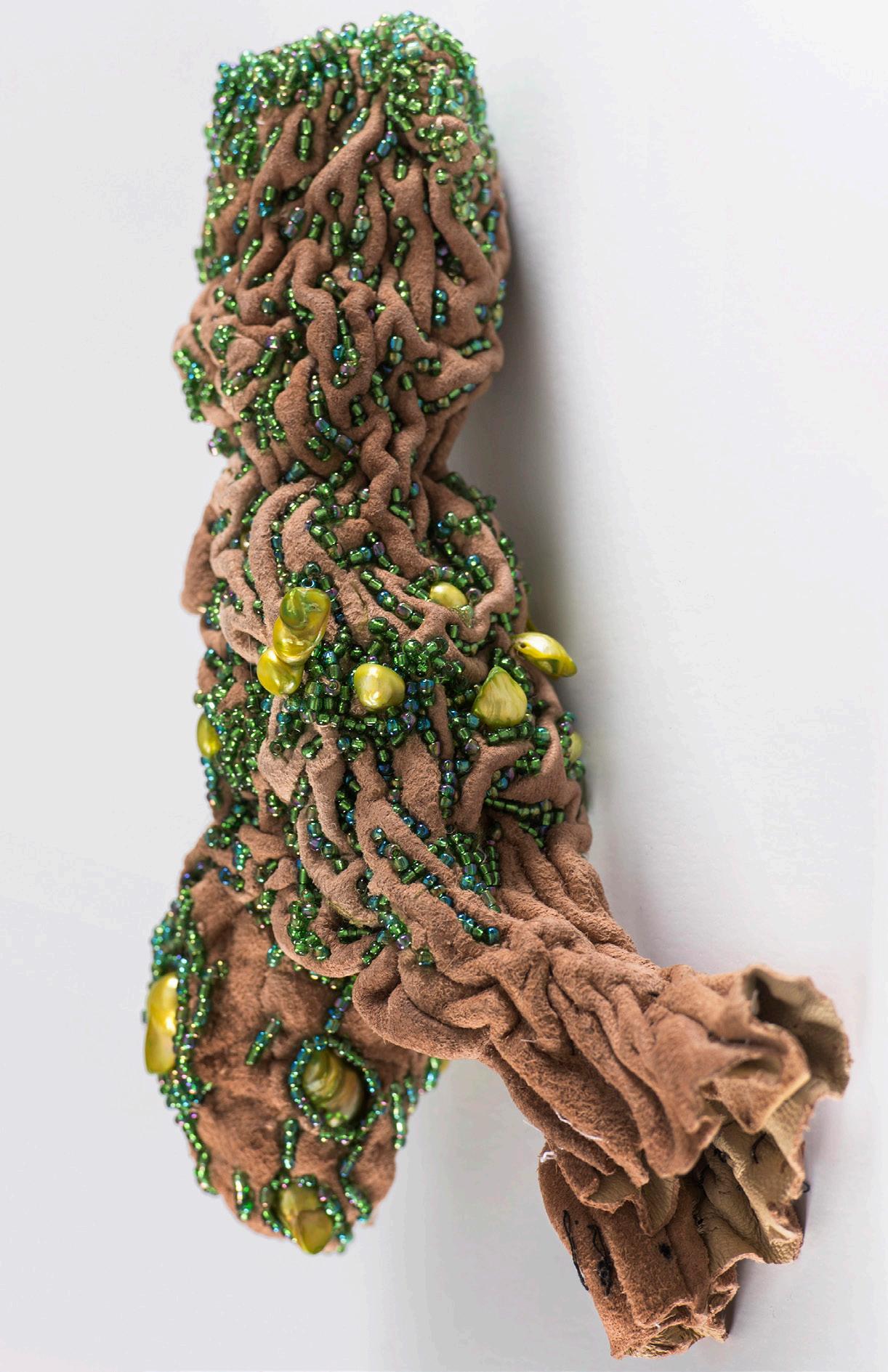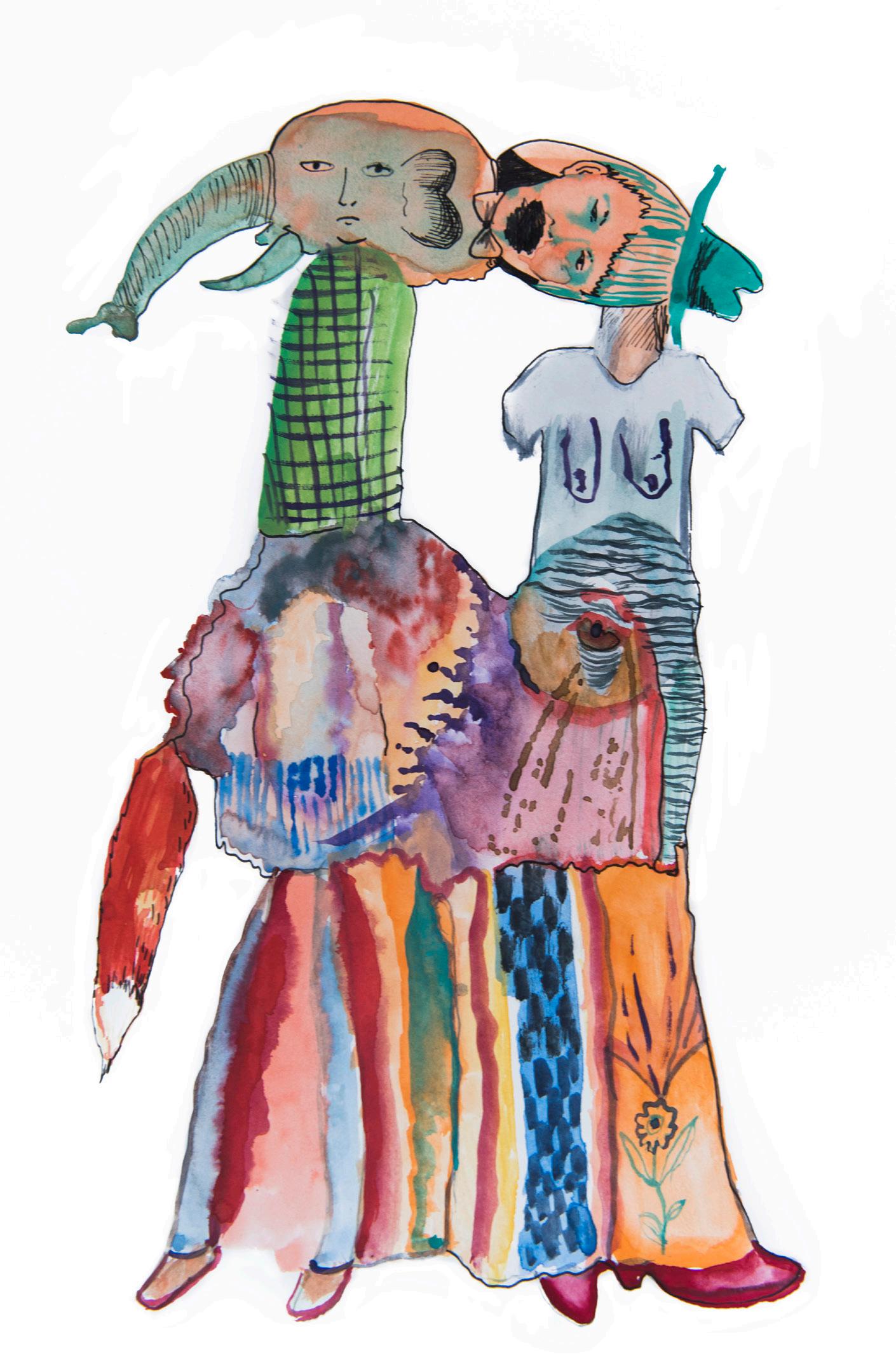

Anima vs. Animus |2021

Nathan BEARD | Christophe CANATO | Janet CARTER | Theo COSTANTINO | Ryan NAZZARI
Curated by Christophe CANATO
Note from the Curator
First of all, I would like to pay tribute to contemporary art and its adepts, whereas from the twentieth century artists have shown us the way by granting themselves the right to express as individuals and not under the guise of a political, religious or monarchical institution.
“L’Art Plastique” as we name it in French includes malleable combination of materials, methods, concepts, and subjects as a whole and is distinguished by the very lack of standardization. I would like to add that the word plastic as shapeable and transformable, is not used in English visual art technical language but has its place in the surgical environment.
As a Visual Artist or a Plasticien (French title for visual artist) the subjects I am working on takes on its full meaning with my Anima series. My photographs are a revisited analysis of the masculine as much through its psyche as through its carnal envelope, inspired by psychologist Carl Jung (26 July 1875 - 6 June 1961), using the term Animus as the unconscious masculine side of a woman and the Anima as the unconscious feminine side of a man.
It seems to me that the question of gender and identity has never been more prominent than in this first part of the 21st century. Since about a decade an individual has the opportunity to choose their civilian status as he/she/they. Humanity is changing and metamorphoses are as diverse as they are complex, with early representative Thomas Beatie the first pregnant man or the popular bearded woman Conchita Wurst to name a few.
Following my solo exhibition, it was important to me to expand reflection on the subject by inviting artists with admirable practice, also because their diversity of gender or discipline is a great spectrum to represent Anima vs. Animus.
Theo Costantino, Janet Carter, Ryan Nazzari, Nathan Beard, all in their own way are offering some rich material for reflection. For some as non-binary, it is also the central subject of their practice, while for others it influences their discipline without being the main subject of their research. With a completely different artistic approach I can relate to Nazzari. His work represents an imaginary world based on cultural references and social codes that induce confusion. The subject is everything and its versus through the beautiful and repulsive, the masculine and the feminine or the sparkling opposed to Gothic. Beard is to my point of view the most representative of the Anima
concept. His work is delicate, precise and meticulous. Often the materials he works with are those traditionally used in feminine practices.
For my first time as a curator with Anima versus Animus I am proposing a platform to share and explore as well as offering a safe environment for the people concerned about identity to approach the subject from another angle. However, my motivation for curating this exhibition was not only limited to the sole aspect of highlighting the evolution of human being, it is also an opportunity to understand human/body as plastic medium.
Christophe CANATO
Carl Jung’s insights into human psychology were instrumental in shaping 20th and 21st century understandings of what it means to live in the world as a gendered being.1 His understanding that a human subject’s actions were driven by unconscious processes upended centuries of humanist thought and radically decentered the human subject. Two of his crucial concepts, the anima, the unconscious feminine aspect of men, and animus, the unconscious masculine aspect of women, certainly gained traction, and most recently seem to be surfacing in relation to the debate around toxic masculinity, and the impetus for men to get in touch with their ‘feminine side’. Before Jung and his contemporaries this idea of the other gender dwelling unconsciously inside of us was not really thinkable.
Jung associated the anima and animus with archetypes, which are universal symbols that are present in a collective unconscious that all subjects share and covertly drive human behaviour. The idea of a masculine and feminine archetype can seem unnecessarily reductive from the 21st century, in that the concept seems to require the masculine and the feminine, when contemporary experiences of gender are often fluid, non-binary, and in short queer: always in process, never stable, resisting interpretation, and capable of being made and remade to reflect the human subject’s experience.
But Jung didn’t always see archetypes as forms that exist independent of consciousness, time, and space; he saw them as informed by all human history, and therefore capable of change.2 So the fact that Jung was both ahead of his time while still very much of his time shouldn’t require us to diminish his contributions to contemporary understanding of gender. As human history progresses, archetypes will change. And even more importantly, the way each human subject engages with their unconsciousness gender can never be fully determined in advance; there can be as many negotiations of unconscious gender as there are people, resulting in a multiplicity of gender expressions such as we are seeing in the contemporary period.
The workings of culture to inform our understanding of gender, and indeed the gendered possibilities available to us, is readily apparent in this exhibition. Theo Costantino’s work marries the sinewy organicism of worked leather with overt embellishment, resulting in objects that hover
1 Jung, C. G. 1959. Aion. Princeton. N.J.: Princeton University Press.
2 McKenzie, Susan. 2006. “Queering Gender: Anima/Animus And The Paradigm Of Emergence”. Journal Of Analytical Psychology 51 (3).
between the actualities of the body and the ways in which that body can be codified by gender. Nathan Beard’s work functions similarly in its deliberate foregrounding of the meticulousness of craft traditions, which are themselves historically associated with the feminine. While his work seems primarily concerned with articulating the complexities of Thai/Australian identity, it’s also possible to see the work articulating the way identities seen as decorative have been historically feminised. Ryan Nazzari’s exuberant works, seemingly rooted in the everyday and shared prolifically through social media, represent a type of ceaseless making that seems to delight in the potentially banal and display the multiplicity of images we have available for the making and remaking of gender.
The exhibition therefore shows us the ways in which gendered identities are informed by culture, where the possibilities of gender are constrained by the images we have available to us, but also enabled by those same images. Janet Carter’s works seems to demonstrate this dual movement; her bound inner tubing of tyres seem to perform the ways in which queer identities are shaped, controlled, and disciplined, yet simultaneously it’s difficult to escape the works referencing of kink and fetish subcultures. The work appears to transform the discipline of repression into an affirmation of identity; they seem demand their social intelligibility be recognised. In a similar way, Christophe Canato’s photographic works appear to directly stage a masculine recuperation of unconscious femininity. Their strategic incorporation of signifiers of femininity enact Jung’s mandate that we incorporate repressed elements, and his deliberately limited colour palette stages these bodies as conceptions or ideas of gendered subjectivities, in turn creating new coordinates for what constitutes a socially intelligible gender.
The works in the exhibition invite us to go with them on a journey with Jung’s work and participate in their stretching and teasing at the contours of his thought. As such, the exhibition as a whole explores potentialities, and seeks to enlarge possibilities, and in this way has its eyes firmly directed toward the future.
Dr Travis KELLEHER
Nathan BEARD

Chao Praya Bloom (ii), 2019, Inkjet print on Canoson Baryta, Swarovski Element, gold leaf, Fenty Beauty Diamond Bomb, glitter, mounting tape, 52 x 72 x 4cm, limited editions of 3 with 2AP
Nathan Beard is an interdisciplinary artist who hold a Bachelor of Arts (Arts) with First Class Honours from Curtin University. Recent exhibitions include Here&Now20: Perfectly Queer, Lawrence Wilson Art Gallery (2020), White Gilt 2.0, Firstdraft (2020), White Gilt, Cool Change Contemporary (2019), A dense intimacy, Bus Projects (2019) WA Focus: Nathan Beard, Art Gallery of Western Australia (2017) and Radical Ecologies, PICA (2016). He has undertaken residencies including the 4A Beijing Studio Program (2017), Artsource Residency at Grey Projects, Singapore (2018) and the Australia Council Residency at ACME Studios, London (confirmed 2021). Beard has been a finalist in the John Stringer Prize (2017), Fremantle Art Centre Print Award (2015, 2016, Highly Commended 2017, 2018) and Churchie National Emerging Art Prize (2020).
Beard uses a variety of mediums including photography, video and sculpture to draw upon his Thai-Australian heritage in order to to unpack the influences of culture, memory and biography. Broader themes around diasporic identity and migration are personalised in Beard’s practice by focusing these issues through intergenerational exchanges with Thai family. Beard’s work situates these intimate engagements alongside broader cultural signifiers to generate creative slippages of identity and ‘Thainess’ that offer viewers a collision of aesthetic and emotional engagements. Biography
Artist’s statement
Chao Praya Bloom is a diptych of works based on documentation from the Singapore Botanic Gardens of orchid species native to the Chao Praya River.
This incredibly biodiverse body of water, known as the ‘River of Kings,’ runs through Thailand and is colloquially referred to as the lifeblood of Bangkok.
Through a combination of digital and physical collaging processes these orchids are arranged into threedimensional, delicately embellished crown-like forms inspired by Phuang Malai, the intricate floral garlands used as offerings in Thailand.
Christophe CANATO

Anima, 2020, Archival inkjet prints on fine art paper. 110cm x 110cm, limited edition of 5 with 1AP
Christophe Canato lives and work in Perth, Western Australia since 2005. Graduating from the Beaux-Arts in 1989, he obtained a DNSEP (Diplôme National Supérieur Expression Plastique) and in 1993, he received a Masters from the prestigious IFM (Institut Français de la Mode). His career as an artist started with the 1997 winner prize of the Paris Salon de la Jeune Création.
Based in Paris, his early work explored new concepts and interpretations of the photographic medium. He then used triptychs and diptychs, image/text combinations, unexpected supports, frames or back-lit boxes to perform mechanisms such as synesthesia phenomenon.
Since he relocated to Perth, Australia in 2005, his photography has radically evolved to a more traditional approach to the medium. His photo-media discipline includes photography and more recently, videography.
In reference to history of art, mythology, folk art and collective memory, his narrative photographs explore physical identities and sexual orientations within social context such as cultural, politics and religion. In his last series such as Anima, Le Baiser, Precinct 9, Bored By Dream, The Space Between Us, the photographs do not only reflect a queer perspective but it is also a demonstration of the power of staging the male body in order to deliver physical and emotional compositions such as idolatry, leadership, fantasies, grotesque or oppressiveness. It is the double meaning and the confusion that can be hidden behind his compositions that interest this artist.The way in which imagery elevates the status of individuals and the boundaries of what is normal or abnormal, acceptable or unacceptable in our collective memories.
Artist’s statement
Christophe’s work is oriented towards the male gender and his equity to cultural or sexual orientation groups. What questions this artist is the notion of belonging or rejection and the status that man is supposed to hold in society.
With his series Anima, Christophe is exploring the inner feminine side of a man. The Anima is both a personal complex and an archetypal that expresses the fact that man psyche has a minority of feminine qualities. According to psychologist Carl Jung (26 July 1875 - 6 June 1961).
Imaginary skin colours such as blue, green, red or white give human beings an extraordinary character with codified powers making references to codes recognizable by all. As an example, blue skin refers to wisdom such as Krishna Indian divinity and in another register James Cameron’s fiction Avatar.

Janet CARTER
Janet Carter completed a Bachelor of Visual Arts at Edith Cowan University in 2008, followed by Honours in Contemporary Arts in 2010.
Carter’s practice embraces a range of practices and forms, including drawing, sculpture, performance, new media and installations. Since her involvement the Proximity Festival in 2012, she has been focused on creating collaborative, non-gallery based, transient participatory works that are concerned with building resilience in an increasingly precarious world. Her current work is concerned with unravelling conceptions around gender, sexuality, desire and embodied identity, with regard to how they impact vulnerable minorities.
In 2011, she was nominated for the Qantas Encouragement of Emerging Australian Art Award and was a finalist in the Churchie Emerging Art Award. She has shown work in the Proximity Festival twice and, with Elizabeth Pedler, was involved in International Art Space’s inaugural Know Thy Neighbour program (2016). She designed and built the craft at the centre of the RAFT ARI and has been an ongoing member of the RAFT curatorial team. In 2018, she was a participant in ArtsHouse’s (Melbourne) Time_Place_Space: Nomad. She recently participated in Performance Space’s Queer Development Program, and was subsequently invited by them to join their Liveworks Festival of Experimental Art as Artist in Residence, to develop Transmission, shown in November 2020 at PICA.
Artist’s statement

Theo COSTANTINO
Deliquesce, 2021
Leather, fabric, beads, freshwater pearls
Theo Costantino is a queer non-binary artist based on Whadjuk Noongar Boodja / Perth. Their practice includes drawing, sculpture, video, photography, written works and performance. They have exhibited and undertaken residency projects within Australia, Europe, the UK and USA both in a solo capacity and collaboratively.
Broadly, Theo’s work investigates the representation and memorialisation of the past: the use and abuse of history, the continuing influence of the past on the present, and the ways in which repressed or forgotten material can resurface in daily experience. They often explores the talismanic power of objects including photographs, which despite their ubiquity often have intense personal significance and are intimately tied to rites of memory.
Theo holds a PhD from Curtin University and undergraduate degrees in Fine Art and Literary Studies. They received a 2015 Visual Arts and Craft Mid-Career Fellowship from the WA Department of Culture and the Arts, the 2013 Hutchins Art Prize, a 2011 Qantas Foundation Encouragement of Australian Contemporary Art Award and the 2012 Artsource/Gunnery Artist Exchange. Their work is held in collections including the Art Gallery of South Australia, Art Gallery of Western Australia, The Cruthers Collection of Women’s Art, Murdoch University, John Curtin Gallery, City of Perth, and City of Joondalup.
They have written prose, libretti and dramatic text; their short story ‘Meniscus’ was published in Global Dystopias, a special issue of The Boston Review edited by Junot Díaz in 2017. In 2009 they wrote the musical theatre work Heart of Gold, which appeared at Perth Institute of Contemporary Art Performance Space and was produced by Hold Your Horses. They have also written critical texts including the book chapter ‘Ruination and Recollection: Plumbing the Colonial Archive’, which appeared in Visual Arts Practice and Affect: Place, Materiality, and Embodied Knowing, edited by Ann Schilo for Rowman & Littlefield in 2016.
Artist’s statement
Since 2010, Theo Costantino has used sculpture to explore anxieties regarding the ambiguous body—bodies suspended in time, between binaries such as life and death, health and sickness, pain and ecstasy, real and fake, classical and grotesque.
The ornate leather objects that comprise Deliquesce draws from the artist’s experience of hormone replacement therapy and social transition as a non-binary person.

Ryan NAZZARI
Ryan Nazzari is a Western Australian mid-career queer artist who lives and works in Perth. He has shown his work both locally and interstate and also uses social media as a gallery.
Ryan primarily creates watercolour drawings and paintings, however, he has worked with multiple medias since graduating from Curtin University in 2004.
Central to the artist’s practice is the constant and prolific making of images that chart the subjective realities of his everyday experience. Biography
Artist’s statement
Ryan Nazzari will present a series of watercolour paintings/drawings that illustrate the prolific production of his practice, which is imbued in expressionism and personal nuisances.
Primarily delivering a snapshot of works that seek to demonstrate the fun, humour pathos, slippages and contradictions of his queer identity, the work will focus on memory and lived and imagined experiences. The watercolour paintings/drawings created, will incorporate a diverse range of styles and comprise creatures and animals that haunt memories and blur quotidian boundaries. These creations exist in Nazzari’s world, one that is both fantastical, pretty and poetic and, at other times, confusing melancholic and monstrous.
Anima vs. Animus |2021
Nathan BEARD | Christophe CANATO | Janet CARTER | Theo COSTANTINO | Ryan NAZZARI
by Christophe CANATO
Opening Event: 18 November 2021 5pm - 7pm
Exhibition dates: 19 November - 16 December 2021
Gallery opening hours: Tuesday to Friday 10am - 4pm Building 10, 2 Bradford St, Mount Lawley

Curated
